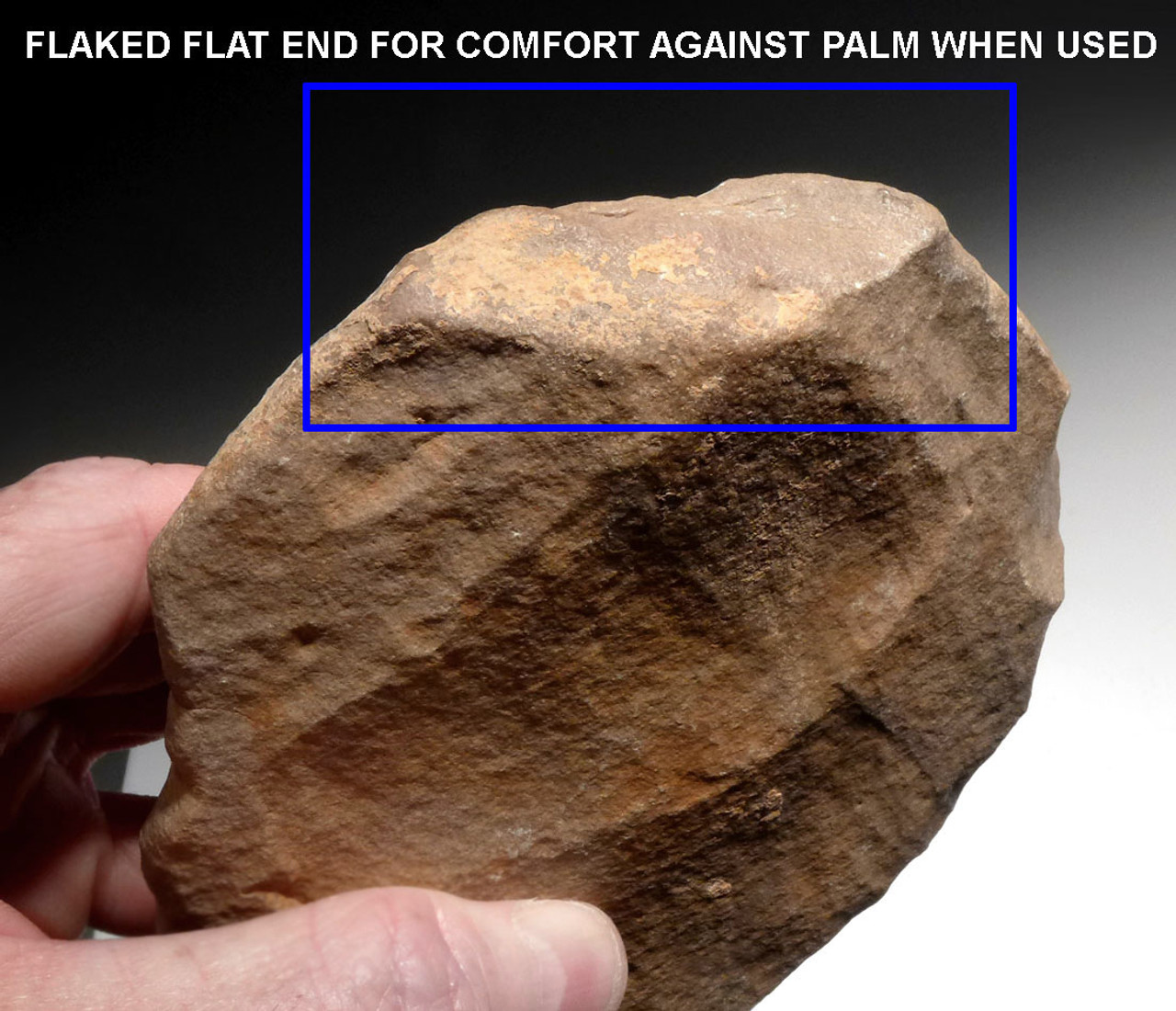Product Description
SEE MORE ACHEULEAN STONE TOOLS
This GENUINE quartzite hand axe was made and used by early humans of the primitive species Homo erectus (ergaster). It was surface-collected from an exposed Lower Paleolithic Acheulian site in the Sahara Desert of North Africa. This Lower Paleolithic tool represents the first scientifically documented intelligent design made by primitive humans. Prior to these Saharan Acheulian handaxes, only crude pebble and flake tools existed in the human fossil record.
As one of the most IMPRESSIVE and finest made Lower Paleolithic African hand axes OF THIS TYPE we have ever sold, this hand axe is a supreme example of a FICRON TRIHEDRAL PICK with a flaked central ridge for strength running down one side, and a flat side on the back. It features a design that is much more aesthetic than was functionally necessary, implying this was considered not just a tool, but a work of art by its prehistoric maker! The ficron hand axe is characterized by its long, narrow and inward tapering body terminating in a delicate tip. In this specimen, it is a massive and robust take on this design! The grip is rounded in a highly aesthetic "circle" going way beyond what was needed for utility. The end has a flake removed where the hand axe would fit against the palm for comfort - ingenious early human thought manifest in its design. Hand axes of this type were designed to puncture large bones to access the highly-prized marrow inside, the most nourishing protein source of the period. This hand axe demonstrates ARTISTIC APPRECIATION and ARTISAN PRIDE, as well as the skill and ability of Early Man's ability, to the highest order. It certainly warrants being considered "museum grade". It features every possible aspect of a prize specimen.
The flaking is superb and shows masterful craftsmanship from its primitive human artisan. Light blushes of orange on one side caused by millennia of this side facing down and absorbing the minerals of the Sahara red sands. Other side shows a different color - a prized and classic example only found in authentic specimens. The chopping tip and edges are intact and well-made with evidence of original prehistoric primary and secondary flaking. Surface areas of the tool display a "desert varnish" - a natural glossy surface where the artifact lay undisturbed and exposed to blowing sands, for millennia. The wind-driven sand polished and deposited microscopic layers of silica on the surfaces of the artifact, giving it a sheen. In many cases, a bi-colored patina on either side, also developed, as the exposed side patinated differently than the unexposed side. Original sediment and mineral encrustations are still present in microscopic crevices and on some surfaces - a trait ONLY found in authentic Paleolithic artifacts like these. These features are a testament to the age and authenticity of ALL Saharan Paleolithic artifacts.
During this time in prehistory when this Lower Paleolithic tool was made, the Sahara Desert (where this stone tool was found) was a savanna rich in wildlife. Prior to the prehistoric global warming that turned the vast region to desert, early humans lived alongside prehistoric giraffe, bison and elephant, which were vital to their survival. Hunting and butchering these animals would have required specialized tools such as those found in the Acheulian Period.
 US DOLLAR
US DOLLAR
 EURO
EURO
 AUSTRALIAN DOLLAR
AUSTRALIAN DOLLAR
 CANADIAN DOLLAR
CANADIAN DOLLAR
 POUND STERLING
POUND STERLING


















